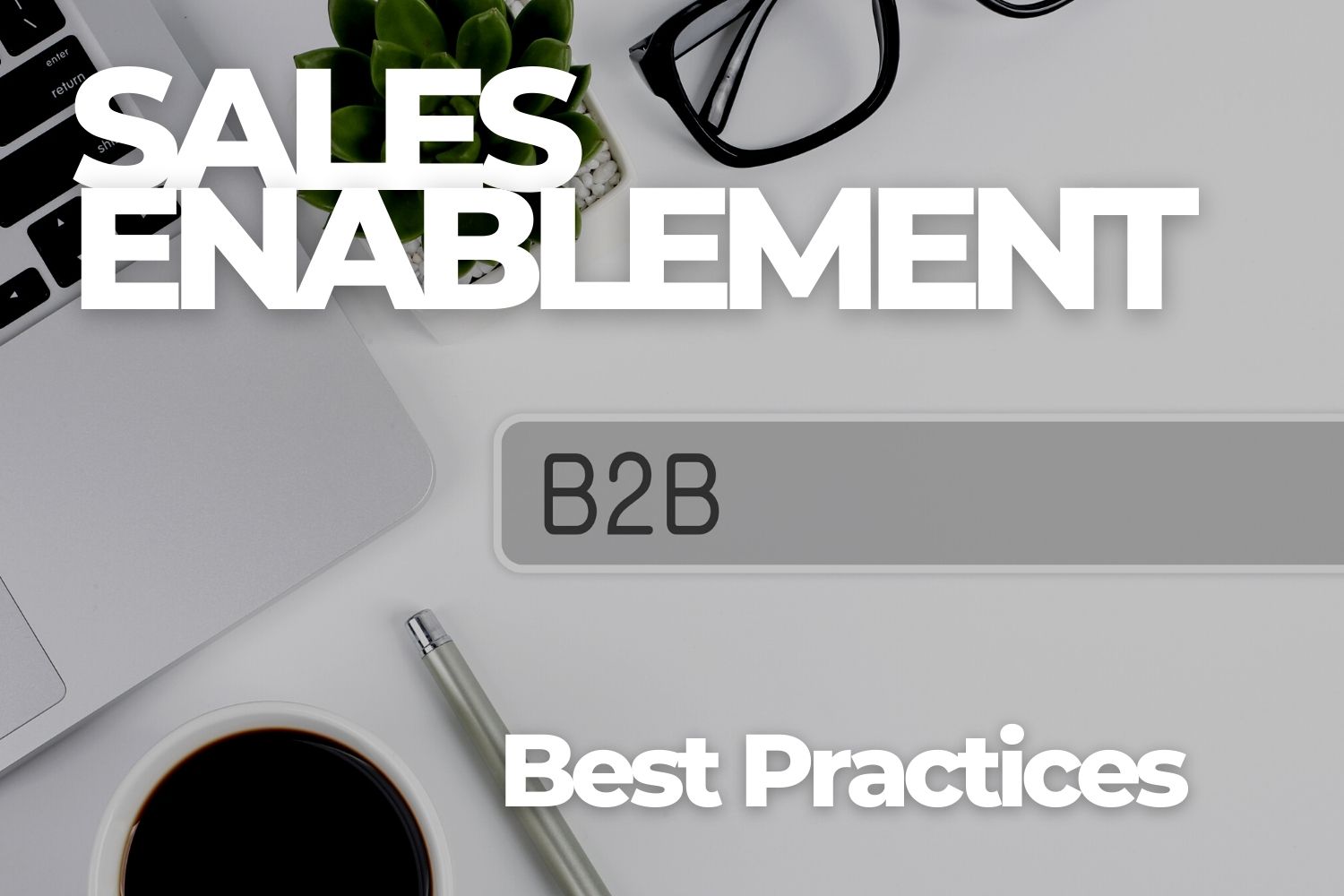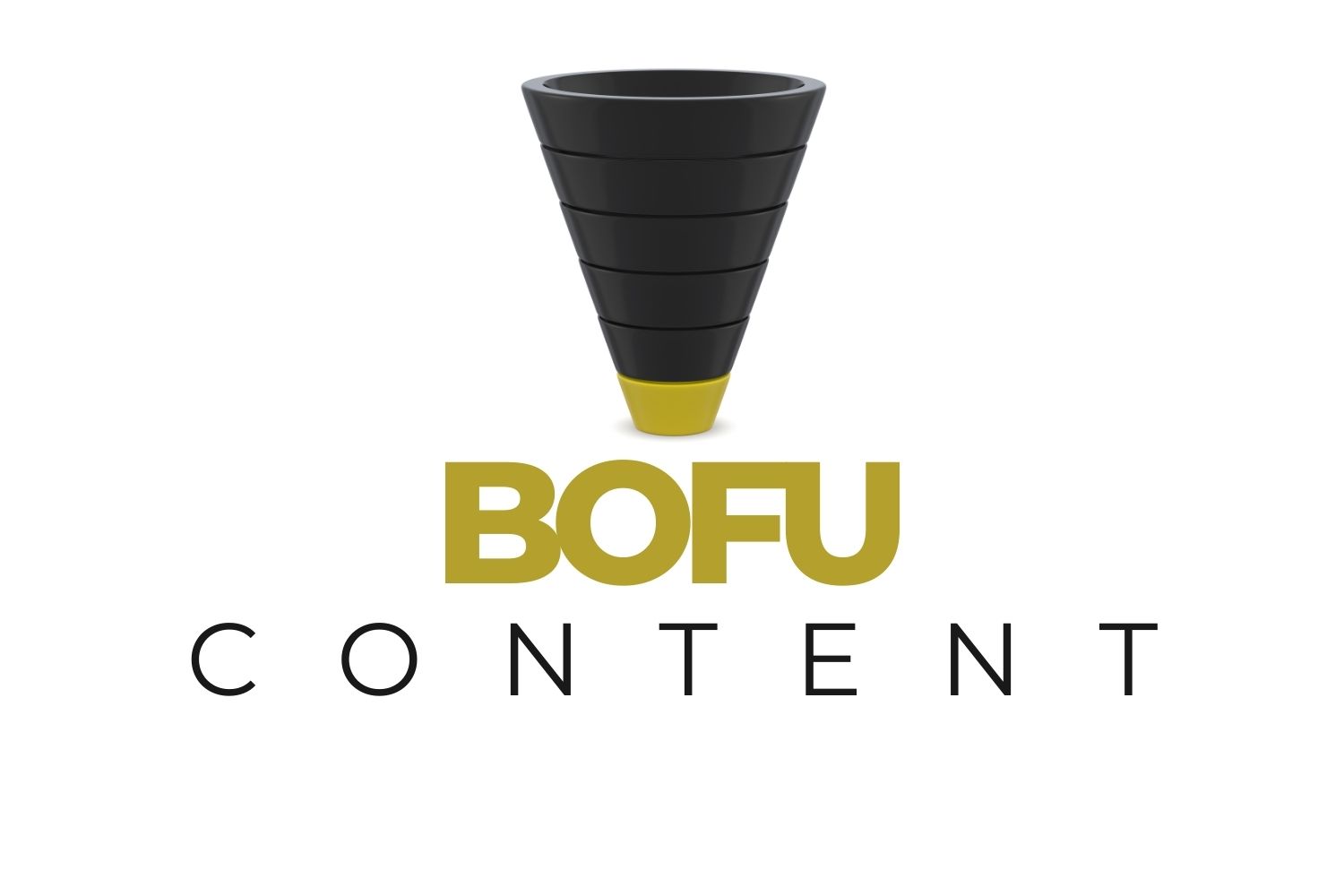HOW TO ACHIEVE HIGHER QUOTA ATTAINMENT AND WIN RATES WITH SALES ENABLEMENT BEST PRACTICES
“Salespeople can’t go it alone anymore in the digital era. Sales enablement is essential if the purchase cycle is long and the products and services require education and explanation. They need to be properly trained and equipped with relevant knowledge, tools, and processes from customer outreach through deal closing. This is especially true in B2B, technology or complex sales.”
~ Pam Didner, author of Effective Sales Enablement
Who needs sales enablement?
Over the last five years, the percentage of salespeople making quota dropped by 10 points. The percentage of companies achieving revenue dropped by nearly 4 points. (Source)
Sales organizations are not keeping up with the pace of change. The pains are clearly evident in complex B2B sales. In software and technology industries:
- More buyers are involved
- The sales cycle is longer
- Buyers have greater access to information and increased demands
Sales can no longer sell advanced, complex technology products by themselves. Done effectively, sales enablement provides all sales people with the best practices, knowledge, skills, tools, and resources needed to succeed.
However, there tends to be a lack of agreement about what sales enablement actually is, what can be accomplished with it and how to make it an effective discipline. In fact, questions about sales enablement abound. You’ll find these questions—along with answers from the experts—on this FAQ page.
What is sales enablement?
It’s a safe bet your company’s org chart includes departments including sales, marketing and HR, to name a few. While it’s unlikely it has a dedicated sales enablement department, research by CSO Insights, the research division of Miller Heiman Group, indicates there’s a 61% chance your company has a dedicated sales enablement person, program or function.
Good for you if you’re among the 61%. According to the research cited above, having an effective sales enablement function leads to two-digit improvements for quota attainment and win rates for forecast deals compared to those without.
But wait…
How do you define sales enablement?
Sales enablement is an ongoing process of equipping sales people—and all client-facing employees—with the content, training, coaching and tools they need to produce effective outcomes.
You need not continue reading if your company has perfected sales enablement. All of your company’s sales processes perfectly align with the journeys of all your customers? You’re set.
However, if you recognize empowering the sales team to succeed is a formidable and ongoing task your company has yet to master, I have a good deal of helpful ideas for you here.
Does your company need sales enablement?
We’ll answer this question with questions you should ask yourself. The more the questions produce “no” answers, the more you need to begin or improve your sales enablement practice.
- Are new hires ramped-up at sufficient speed and able to achieve quota as fast as you’d like?
- Does your company’s sales and marketing teams communicate and collaborate effectively?
- Does your company effectively collect and share best practices across sales and service departments?
- Do your salespeople know how to search for and find the content they need quickly and effectively?
- Does every salesperson perfectly nail product positioning and value messages?
- Do your salespeople consistently articulate a solution aligned to the customer’s need?
- Are you able to determine exactly what makes your top performers successful?
- Does your company culture support the continuous development of salespeople and sales leaders?
- Do you consistently develop and implement personalized performance improvement plans?
- Are you able to avoid discounting products and services?
- Do your customers enjoy positive interactions across every interaction channel?
Whose job is sales enablement?
“There are many opinions about where sales enablement should live inside an organization, but there is no right answer. It can live in sales, marketing, or human resources. It can report to sales operations, or directly to the CEO, CMO or CRO.”
~ Elay Cohen, author of Enablement Mastery
The ideal answer is sales enablement is its own department or independent unit, which may be part of the sales team and serve as a peer to sales operations.
The growth in sales enablement as a function in organizations is clear. However, the answer to this question tends not to solicit universal agreement. “It depends” is the common answer. What does it depend on?
- Budget
- Timelines
- Resources
- Tools
- Company roles
- Management
- Maturity of the sales organization
Undoubtedly, companies approach sales enablement differently and evolve their approach over time. After all, the function is evolving and unlike well-established departments, the team structure of sales enablement varies across organizations. In truth, for early entrants, the sales enablement function is most often performed collectively by multiple business units including sales, marketing, customer service, and HR.
Research and advisory firm TOPO claims:
- Sales enablement is owned jointly by sales and marketing and must collaborate on needed resources.
- Marketing is usually responsible for creating the vast majority of the resources.
- Marketing should bear most of the responsibility for training the sales organization.
- Sales operations play a crucial role in “operationalizing” the information sales receive as part of the sales enablement program.
- Sales management needs to make sure the sales enablement program is put into practice.
TOPO’s Scott Albro concludes, “When it comes to sales enablement, the best organizational rule is that marketing is a better creator and sales is a better enforcer.”
How do sales and marketing achieve alignment?
If sales and marketing are to work together, they have some silo-busting to do.
First, they should focus on common priorities. Inevitably, sales and marketing will have some different priorities, however the two factions should agree to focus on a small set of priorities they can work together on.
Second, they should put a service level agreement (SLA) in place. An appropriately aligned team creates an SLA, a contract, to identify roles, responsibilities, clear deliverables and schedules. The two factions should also agree on metrics to be used to measure progress and success.
Third, marketers should work to better understand the salesperson’s challenges. An effective practice is to shadow members of sales team—both junior sales persons and highly skilled veterans—to learn how they manage leads, communicate with customers and address objections. Additionally, marketers can conduct focus groups with sales people or have them fill out surveys to gain insights into the tactics and strategies they use.
Finally, sales and marketing need to communicate and solicit feedback from each other. A regular cadence of communications builds rapport, helps to validate insights, and provides an opportunity to change course when needed.
A feedback loop and group sessions between sales and marketing will help surface issues and improve lead quality. Sales should also involve including marketing in forecast calls to uncover insights that can help the team determine where to shift and prioritize investments to boost sales efforts.
What does sales enablement deliver?
Sales enablement may be tasked with different functions and deliverables. Most common among them are:
- Content
- Training
- Coaching
- Processes and technology
We’ll tackle questions about each now.
Why is content so critical?
Content plays a critical role in technology sales serving to educate prospects and give sales professionals relevant talking points.
While it often functions as your marketing department’s calling card to create marketing qualified leads (MQLs), content marketing is a vital part of the selling cycle beyond the awareness stage. Equipped with the right content, salespeople can add value every time an interaction occurs—online and off—for prospects and customers.
Learn more about content marketing here
Reference The Content Marketing Roadmap here.
What content serves customers?
Client-facing content for technology companies should align with the stages of customer’s journey including awareness, consideration/decision and implementation. Note: many organizations separate “middle of the funnel” stages—most commonly, consideration and decision—however, here, for the sake of simplicity, we’ll combine the two.
Awareness
Examples of customer-facing content for generating awareness include:
- Blog post and articles
- Social media content
- Customer case studies
- White papers and eBooks
- Industry research
- Infographics
- Interactive tools (such as assessments, quizzes, calculators, etc.)
- Video
Consideration and decision
None of the above content types are necessarily out of bounds for this stage, however, additional assets that can serve to help prospects make informed buying decisions might include:
- Webinars
- Product demonstrations
- Competitor comparisons
- Client references/testimonials
- Collateral
- Proposal templates
- Contract templates
Implementation
Again, the content types listed above may be useful to help customers implement your technology. You may also want to develop assets such as:
- Industry-specific or application-specific implementation guidelines
- How-to videos or courses
- Best practice tip sheets
- Help documentation
What is internal enablement content?
Content created for internal enablement helps build the salesperson’s skills and knowledge to prepare for interacting with prospects. Although content created expressly for internal use may focus on a singular stage of the buyer journey, following is an all-purpose list:
- Customer profiles and personas
- Brand and/or product cheat sheets
- Competitor research
- Sales playbooks
- Sales scripts
- Training assets
- Opportunity planning tools
- Implementation checklists
- Account management tools
- Relationship mapping templates
What are the keys to the content planning process?
The following is a five-step process based on advice sourced from the book Sales Enablement—A Master Framework to Engage, Equip, and Empower a World-Class Sales Force.
- Take stock of what you have. Conduct an inventory of everything available including informal content (such as presentations created by sales).
- Gather feedback and data. Feedback may come from customers, sales and internal teams. Gather any data you have on the effectiveness or use of content.
- Assess your assets. Identify assets that need to be improved. Trash obsolete content and what appears to be redundant.
- Identify the gaps. Try to find gaps in the phases of the customer’s path, or by role or industry. Plan to create content to fill the gaps.
- Identify the projects that best support your strategies and organization’s goals.
Where does training fit in?
Training is another critical component of sales enablement. Some would say training is its main function. Training should focus on increasing knowledge, helping sales people master methodology, and skills training to apply the knowledge and execute methodology.
Training applies to both onboarding and continuous training:
- Onboarding—The effective onboarding of new hires can have a great impact on your success—and the retention of salespeople. Decreasing the time it takes to ramp-up a new salesperson to productivity is an important goal.
- Continuous training—Successful sales organizations commit to continuing training after onboarding. The objective is to help salespeople keep current on new techniques, market trends and products. In addition to learning new things, the training should review previous lessons and help trainees sharpen their skills. Additionally, continuous training should come from marketing and focus on branding, messaging, and marketing campaign strategies and tactics.
Yes, best-in-class companies prioritize social selling and improve win rates as a result. Why? Most sales people aren’t effective at social selling or even knowledgeable about how to use social media to engage potential buyers. Those that do use social media effectively are able to provide information that helps speed-up the buyer’s decision-making process.
LinkedIn’s Social Selling Index shows the strong correlation between achieving sales goals and sales reps that score high in its index. 78% of social sellers outsell peers who don’t use social media and high scorers:
- Get 45%more sales opportunities
- Are 51%more likely to hit quota
The report claims social selling technique eliminates the need for cold calling and enables sales reps to:
- Create a professional brand
- Focus on the right prospects
- Engage with insights
- Build trusted relationships
Sales enablement professionals need to take a proactive stance. They should encourage the use of social selling and help salespeople understand the potential of each network and how to use it, master the tools needed to stay on top of social media and add value at each stage of the customer journey by sharing content effectively.
Where does coaching fit in?
Coaching’s critical for reinforcing content and training services and improving ROI. Though coaching has long been a focus in sales organizations, it remains one of the biggest challenges.
The authors of Sales Enablement identify multiple types of coaching, including:
- Lead and opportunity coaching
- Funnel or pipeline coaching
- Skills and behaviors coaching
- Account coaching
- Territory coaching
Where do processes and technology fit in?
The management of sales technology tends to fall under the purview of sales operations. However, sales enablement continues taking a more active role and a new category of software, sales enablement content management (SECM), has made its mark. Additionally, sales enablement technology often includes learning management, coaching technologies, and other solutions.
Let’s look take a closer look at SECM. An SECM allows the salesperson to search for content assets based on specific criteria. Many integrate with established CRM systems to proactively suggest content based on the specific sales scenario and, in some cases, automatically generate sales playbooks.
Additionally, SECM platforms provide important analytics, which enables users to:
- Assess feedback from salespeople regarding the effectiveness of content and tools
- Track which content’s used by salespeople
- Track which content buyers are consuming
- Track which content contributes to higher win rates
How do you build your sales enablement technology stack?
As with most topics we’ve covered, especially the “how to’s,” your company will have unique requirements, however, a bare-bones set of steps should include:
- Identify what needs to be done. What will help sales be more productive? What will help make sales enablement a stronger function?
- Audit what you have. What tech platforms do you already have? Which among them play a role in achieving objectives? Which are used (or neglected)?
- Establish priorities. Determine what’s nice to have vs. what’s essential.
- Evaluate your options. Look at your vendor options. Invite key stakeholders to get involved in the process. You’ll need them to get where you want to go.
In the book Effective Sales Enablement, author Pam Didner offers helpful hints for selecting the right tools. She writes, the questions to ask should include:
- What problems are we trying to solve?
- How will we measure success?
- How does the tool help customers?
- Where does the tool fit in our overall sales and marketing tech stack?
Should you create a brand guide?
Yes, a brand guide serves as a central element for the content marketing and training processes that drive your sales enablement efforts. Recognize that customers vacillate between materials and sources from both sales and marketing and it serves your interests to present a consistent brand in terms of look, feel, tone and messaging.
Your company’s marketing team should create branded templates for:
- Presentations
- Case studies
- Solution briefs
- And other frequently used content types
Generally, the brand guide is created by the marketing department, however, in the interest of alignment and consistency, you’ll want the sales team—or sales enablement team—to buy in and subscribe to its ideas.
Should you have a messaging framework?
Yes, you need this too. In the B2B realm, what you sell is bound to have a variety of features and benefits and in addressing various audiences, the messages to stress won’t always be the same.
This is where a messaging framework comes into play. With a solid, agreed-upon messaging framework, both the sales and marketing teams can consistently present simple and meaningful features and benefit statements. A carefully crafted messaging framework can guide sales scripts, pitches and much more.
What’s the value of a sales playbook?
Sales playbooks can be invaluable as they provide valuable details to be applied to:
- Sales pitches
- Competitive landscapes
- Product differentiation
- Target customer profiles
- Product offerings
- Customer success stories
Again, according to Pam Didner, elements of the sales playbook may include:
- Product/solution descriptions
- Competitive analysis
- Customer challenges
- Value proposition
- Elevator pitch
- Proof points
- Conversation starters
- Buyers’ roles
- And more
How do you measure your progress?
Sales enablement professionals need to gain clarity regarding the effectiveness of the efforts and methods they employ. Armed with performance data, enablement professionals can better justify the work, better align with senior level decision-makers, and refine processes and priorities to achieve more successful outcomes.
The following list of sales enablement metrics are offered by Elay Cohen in his book, Enablement Mastery.
- Quota attainment—Cohen recommends reviewing the degree sales targets are reached monthly, quarterly, and annually by seller, manager, segment and tenure.
- Win/loss rates—Know deal-win rates to better predict resources, leads and deal opportunities needed to hit quota.
- Sales cycle time—Knowing the number of days in a sales cycle helps the company predict revenue and forecast. Also, for better allocate resources, it’s helpful to know where in the sales process teams are getting stuck.
- Deal size—Look at deal size and average selling price to gauge sales skills.
- Time-to-ramp—It’s important to know time-to-ramp, the amount of time it takes to hit quota, to improve the effectiveness of onboarding efforts.
- Content effectiveness—As mentioned prior in the section about SECM software, it’s important to know content consumption metrics such as views, download, user ratings and more. Cohen claims, “Tying knowledge and content consumption back to closed or lost deals is the holy grail of content enablement metrics.”
- Employee attrition/retention—You need to know how many employees leave each year and understand the related costs. Obviously, retention should be a high priority.
- Employee engagement—Measure employee engagement with employee satisfaction or net promoter score. Correlating employee engagement to results is a great way to profile top performers.
The Sales Enablement Handbook includes many of the metrics above, but also:
- Number of new customers
- Number of new multi-product customers
- Productivity per rep
- Qualification/demo-to-close rate
How do you get your sales enablement plan started?
Though far too few companies take a formal approach to setting up sales enablement, doing so has proven to greatly affect sales performance as measured by quota attainment, win rates for forecast deals and revenue plan attainment.
Our research uncovered a variety of approaches to creating a sales enablement strategy. Here, I’ll offer a simple set of fundamental steps recommended in The Sales Enablement Handbook by Ben Cotton.
- Document a mission. With a focus on long-term goals, document what the team will aspire to accomplish.
- Document a strategy. Create a simple strategy document to summarize what the team does. Identify the key stakeholders you’ll serve.
- List the key plays. Determine the big initiatives the sales enablement function will focus on.
- Set targets. Determine your plan’s most important goals and select the metrics you’ll use to evaluate your progress.
- Define responsibilities.What will the sales enablement team be responsible for? Your list may include:
- Onboarding
- Sales process and methodology
- Sales playbooks
- CRM
- Sales tools and technologies
- Sales content
- Ongoing training and development
- Competitive intelligence
- Sales projects and campaigns
- Deal support
- Sales coaching
- Recruiting
- Incentives and compensation
- Channel partner support
What skills does your team need?
Given the authority to hire employees or contractors, you’ll want to look for:
- Communications skills—Sales enablement is a cross-functional role and so your best performers must possess the ability to navigate multiple departments, listen well, and communicate effectively.
- Training skills—The best enablement professionals can energize, motivate, command the attention of an audience and educate and inspire.
- Analytic skills—As the sales enablement function matures, strategic leaders should be able to analyze metrics and plan tactics tied to practical business strategies.
- Sales sensibilities—Your team will require people who grasp the achievement mentality of top salespeople and the challenges all salespeople face.
- Market experience—Relevant market experience in sales, product marketing and your specific industry will give you team members greater credibility.
- Content skills—Content skills are paramount. Team members, or the team at large should be adept at:
- Understanding how content will be used
- Writing and producing content in different formats
- Sourcing appropriate tools salespeople can use to find and use content
- Attention to detail—Team members should be able to focus on continuous improvement by identifying gaps and proposing solutions.
- Comfort with new tools, processes and technology—At least one team member must have the skills to:
- Evaluate, test and deploy new tools
- Help make the tools easy to learn and use
How can you evolve your sales enablement practice?
Each of the experts whose books I’ve referenced agree the process of assessing your sales enablement maturity will help you determine how to shore-up your gaps and make effective progress. Essentially, having a clear view of where you now stand is a critical first step to defining your journey forward.
In Enablement Mastery, the authors present a four-stage maturity model:
- Random
- Organized
- Scalable
- Adaptive
For each, it is recommended to evaluate the following:
- The degree to which the customer is a defined design point
- The degree to which the strategy is formally documented and sponsored by company leaders
- The audience served, as in salespeople, managers and/or all customer-facing roles
- The services delivered and the degree to which they are aligned to unified value messaging
- The degree to which cross-function collaboration has been formalized
- The degree to which useful technologies are integrated to serve sales enablement objectives
- The degree to which operations are formalized, metrics are recorded and production processes are clear and effective








Comments are closed.